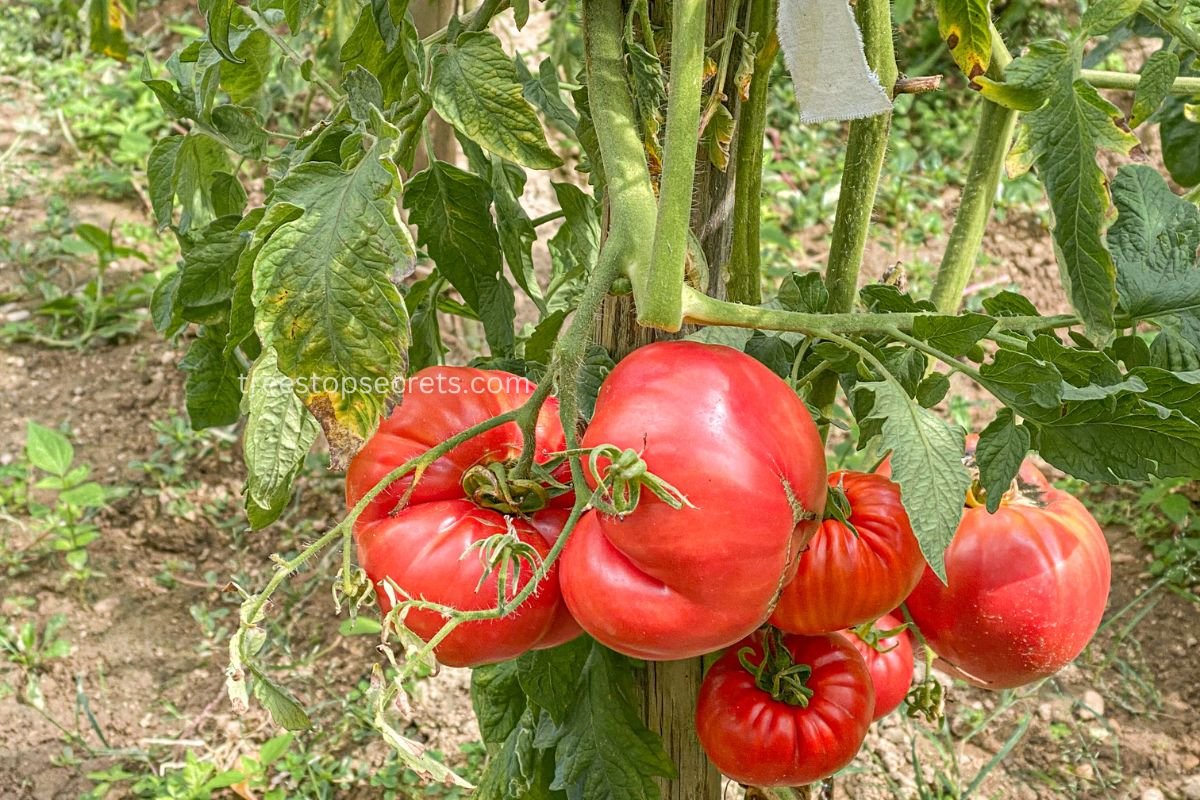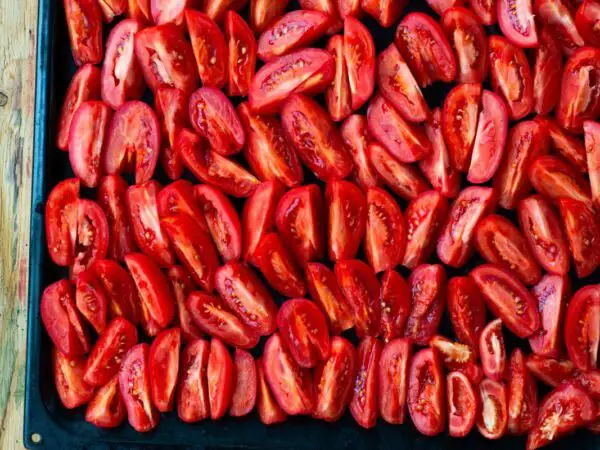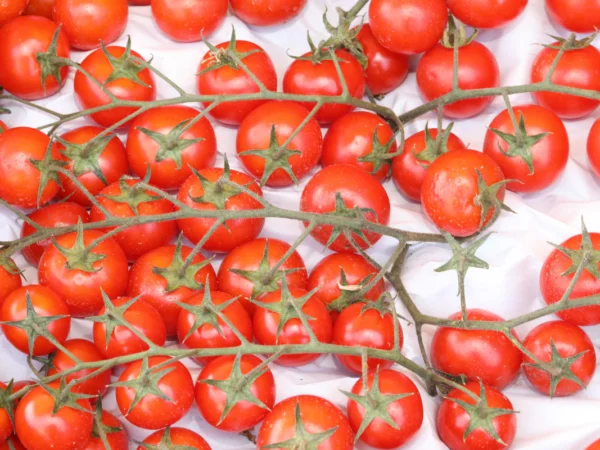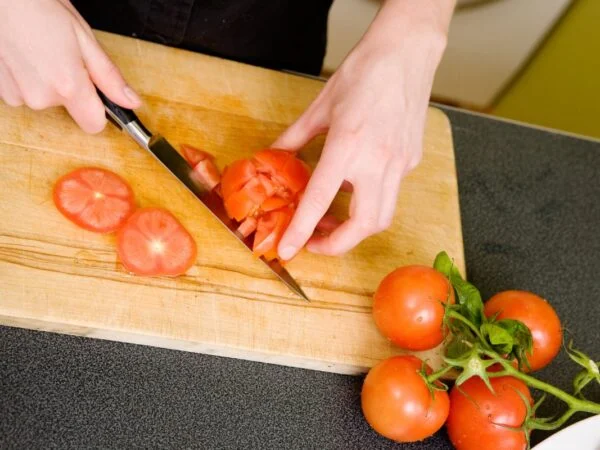Beefsteak tomatoes are a popular choice among home gardeners due to their exceptional taste and substantial size. These tomatoes thrive in well-drained soil, require ample sunlight, and benefit from staking for support as they grow. Their high demand is no surprise given the delicious dishes they can help create.
When growing beefsteak tomatoes in containers or in rows, understanding the ideal spacing, light requirements, and necessary care can significantly impact yield. So how many of these juicy beauties can you expect per plant? Let's delve into the factors that influence tomato production, including seeds, maturity, and days, and discover how to help your beefsteak tomato plants flourish.
Understanding Beefsteak Tomatoes
Beefsteak tomatoes are known for their large, meaty fruits that can grow to impressive sizes. They have a rich, sweet flavor profile, making them popular in various culinary dishes. From juicy burgers to fresh salads, beefsteak tomatoes offer a wide range of culinary uses.
Beefsteak tomatoes seeds thrive in environments with full sun, as this is essential for their optimal growth. They require well-draining soil to prevent waterlogging and ensure healthy root development. Adequate air circulation around the plants is also necessary to reduce the risk of diseases and promote overall plant health.
Varietal Differences
Different cultivars of beefsteak tomatoes are available, each offering unique characteristics. These cultivars vary not only in size but also in color and flavor profiles. For example:
- The "Brandywine" variety is known for its large size and pinkish-red hue.
- "Cherokee Purple" stands out with its deep purple skin and complex, smoky flavor.
- In contrast, "Yellow Brandywine" offers a vibrant yellow color with a mild yet sweet taste.
These examples showcase the diverse options available within the realm of beefsteak tomatoes. Gardeners and cooking enthusiasts can experiment with different varieties based on their specific preferences and intended culinary applications.
Understanding these varietal differences allows individuals to select the most suitable type of beefsteak tomato based on factors such as taste preference or visual appeal.
Preparing for Planting
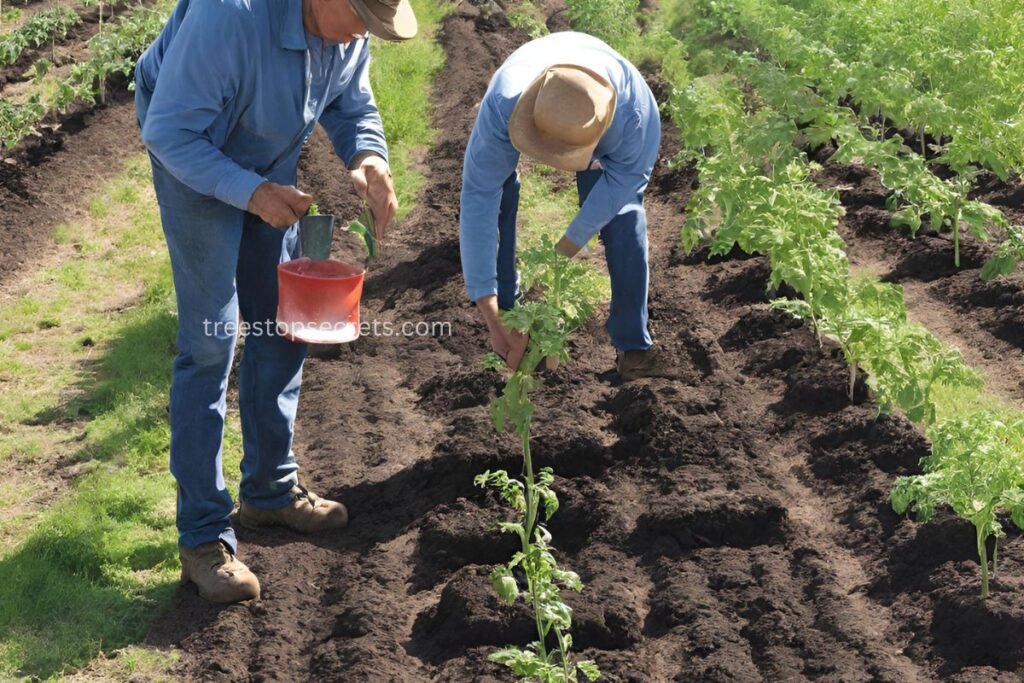
Soil Preparation
Beefsteak tomatoes require nutrient-rich soil to thrive. This type of tomato plant benefits from a pH level between 6.0 and 6.8, which is slightly acidic to neutral. When preparing the soil, it's crucial to consider these requirements to ensure optimal growth and fruit production.
Incorporating organic matter into the soil is essential for providing the necessary nutrients for beefsteak tomatoes. This can be achieved by adding compost or well-rotted manure to enhance the soil's fertility and structure, promoting healthy root development and robust foliage.
Spacing and Support
Proper spacing plays a vital role in ensuring each beefsteak tomato plant receives adequate airflow and light penetration. This not only reduces the risk of diseases but also encourages better fruit set. It's important to space out each plant appropriately, typically around 24-36 inches apart, depending on their expected size at maturity.
Beefsteak tomatoes require sturdy support systems due to their large fruits that can weigh down the stems. Providing strong stakes or cages will prevent the plants from sprawling on the ground and protect them from damage caused by heavy rain or wind.
Preventing overcrowding is crucial for maintaining healthier plants overall as it minimizes competition for resources such as water, sunlight, and nutrients among neighboring plants in your garden bed.
Plant Care Essentials
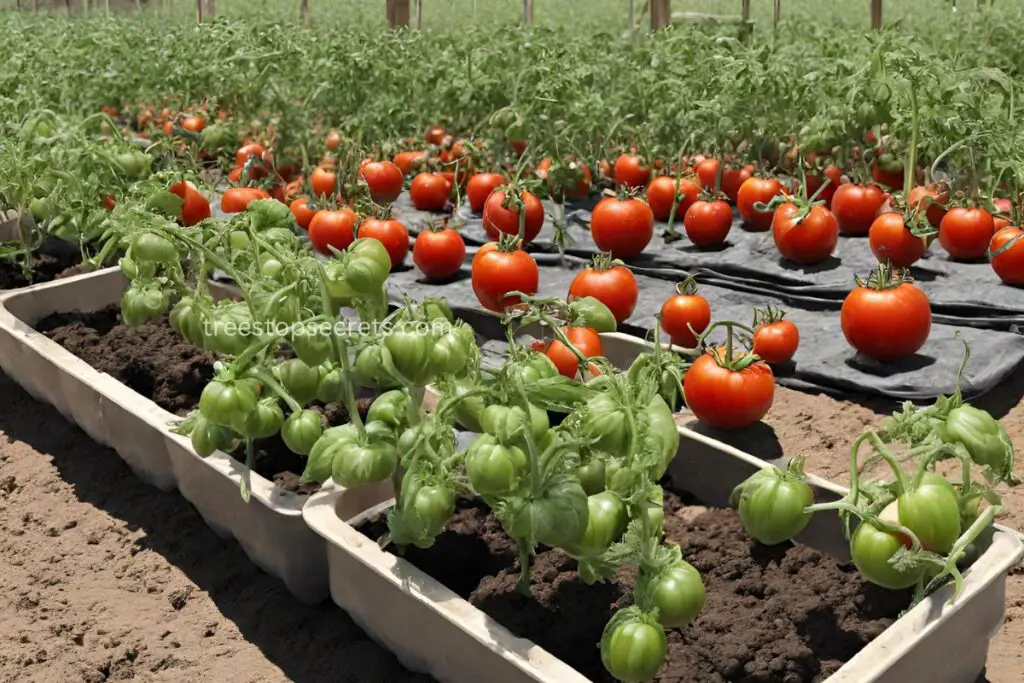
Watering Needs
Beefsteak tomatoes require consistent moisture levels to thrive. It's important to water them regularly, ensuring the soil stays moist but not waterlogged. Deep watering is essential for the development of strong roots, as it encourages them to grow deeper into the soil in search of water.
Avoiding waterlogged conditions is crucial because they can lead to root rot and other diseases that can harm the plant. To achieve this, consider using a soaker hose or drip irrigation system to deliver water directly to the base of the plants, minimizing moisture on the leaves which could lead to fungal issues.
Fertilization Strategy
A balanced approach is key. During planting, incorporate a balanced fertilizer into the soil according to package instructions. Look for options with an N-P-K ratio (nitrogen-phosphorus-potassium) specifically formulated for tomatoes.
Nitrogen supports leafy growth early in the season; phosphorus aids in flower and fruit production; potassium helps with overall plant health and disease resistance.
Organic options such as compost or well-rotted manure are excellent choices for sustainable growth. They provide slow-release nutrients while improving soil structure and microbial activity—essential components for healthy tomato plants.
Pruning Practices
Pruning plays a vital role in maximizing beefsteak tomato yield. Removing suckers—those small shoots that develop between main stems and branches—is crucial because they divert energy from fruit production. By eliminating these suckers, you direct more energy towards developing larger fruits on existing branches.
Trimming lower foliage promotes better airflow around your plants, reducing humidity levels and preventing diseases like blight from taking hold among your crop.
Pruning techniques should also be employed carefully as improper pruning can lead to open wounds on your plant where pathogens could enter. Therefore, always use clean gardening shears when pruning and ensure proper technique by cutting at a 45-degree angle just above a bud or branch junction.
Factors Influencing Yield
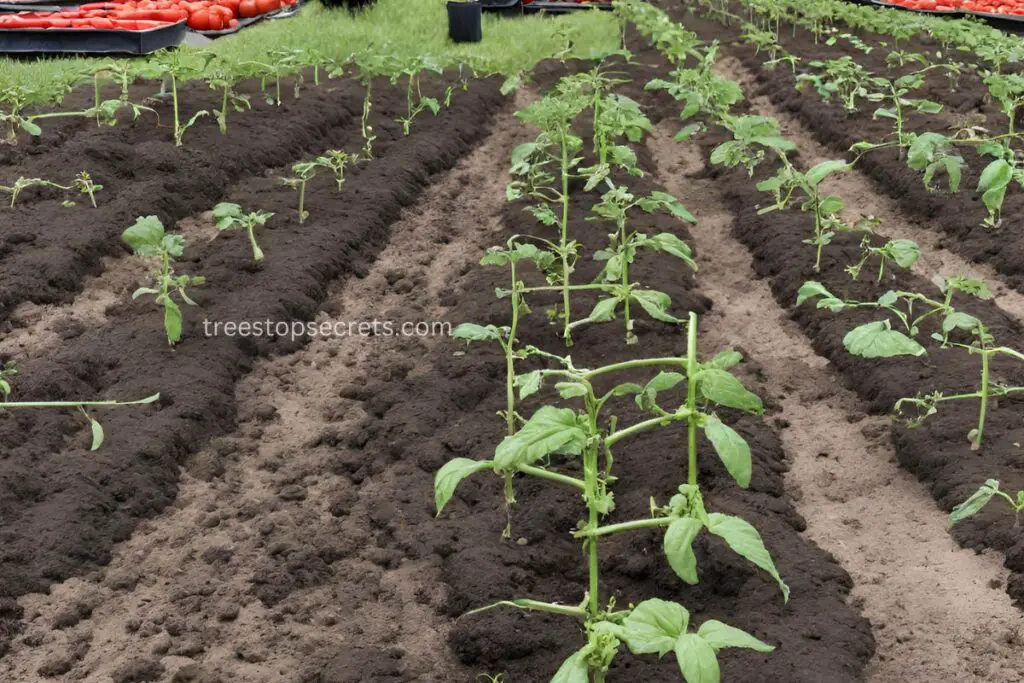
Climate Conditions
Beefsteak tomatoes thrive in warm temperatures, making them ideal for regions with long, hot summers. However, they are susceptible to cold damage and should be protected during unexpected temperature drops. These tomatoes are adaptable to various climate zones, including Mediterranean, subtropical, and temperate climates.
In colder areas, consider using protective coverings or planting in containers that can be moved indoors during cold snaps. Conversely, in excessively hot climates, providing some shade during the hottest part of the day can prevent sunscald on the fruits.
Pest Management
Several factors influence how many beefsteak tomatoes per plant you'll get; one of them is pest management. Common pests affecting beefsteak tomatoes include aphids, hornworms, and whiteflies. To naturally control these pests without harming beneficial insects like bees and ladybugs, consider using neem oil or introducing predatory insects such as ladybugs.
Early detection is crucial for effective pest management. Regularly inspect your plants for any signs of infestation so that you can take action promptly before the problem escalates.
Disease Prevention
Understanding disease prevention is essential. Common diseases affecting these plants include early blight and blossom end rot. Implementing crop rotation practices helps prevent disease buildup in the soil by alternating tomato crops with unrelated plants each season.
Choosing resistant varieties when possible can significantly reduce the risk of disease affecting your tomato plants. Look for cultivars labeled as resistant to common tomato diseases like verticillium wilt and fusarium wilt.
Average Beefsteak Tomato Yield
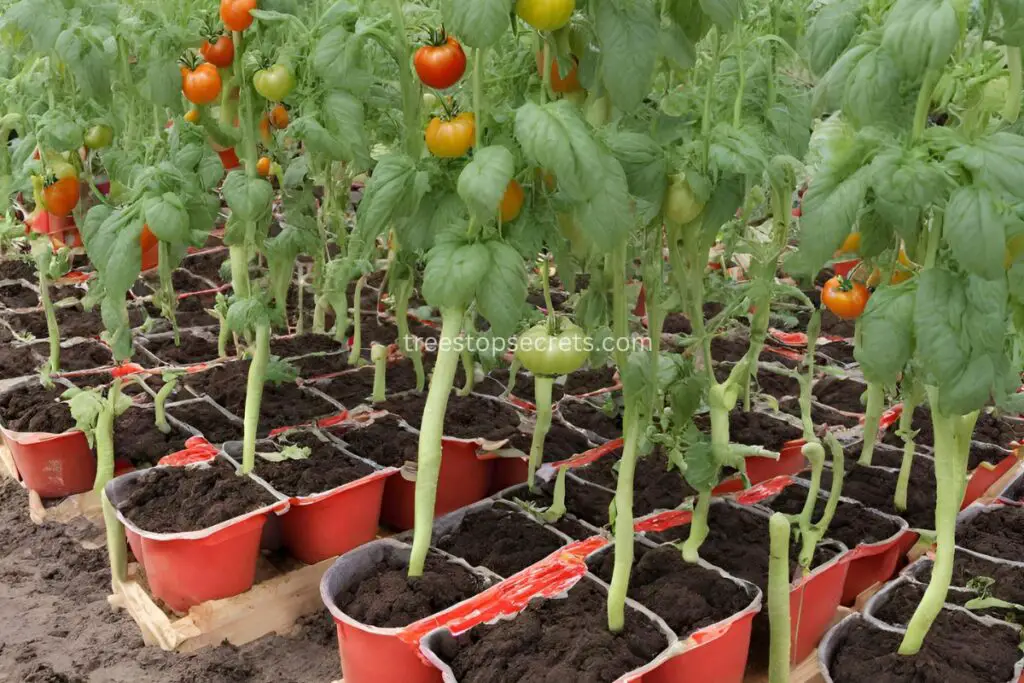
The average yield can vary based on several factors. The number of tomatoes produced by a single plant depends on various elements, including environmental conditions, care, and maintenance.
Beefsteak tomato plants can typically produce between 10-20 pounds of tomatoes per plant throughout the growing season. However, this yield is influenced by factors such as sunlight exposure, watering frequency, soil quality, and pruning practices.
The productivity of each individual plant can be maximized by ensuring adequate sunlight exposure for at least six hours a day. Regular watering to maintain consistent moisture levels in the soil and proper fertilization with organic matter or compost can significantly enhance tomato production. Pruning techniques that promote airflow and remove unnecessary foliage also contribute to increased yields per plant.
Maximizing Tomato Production
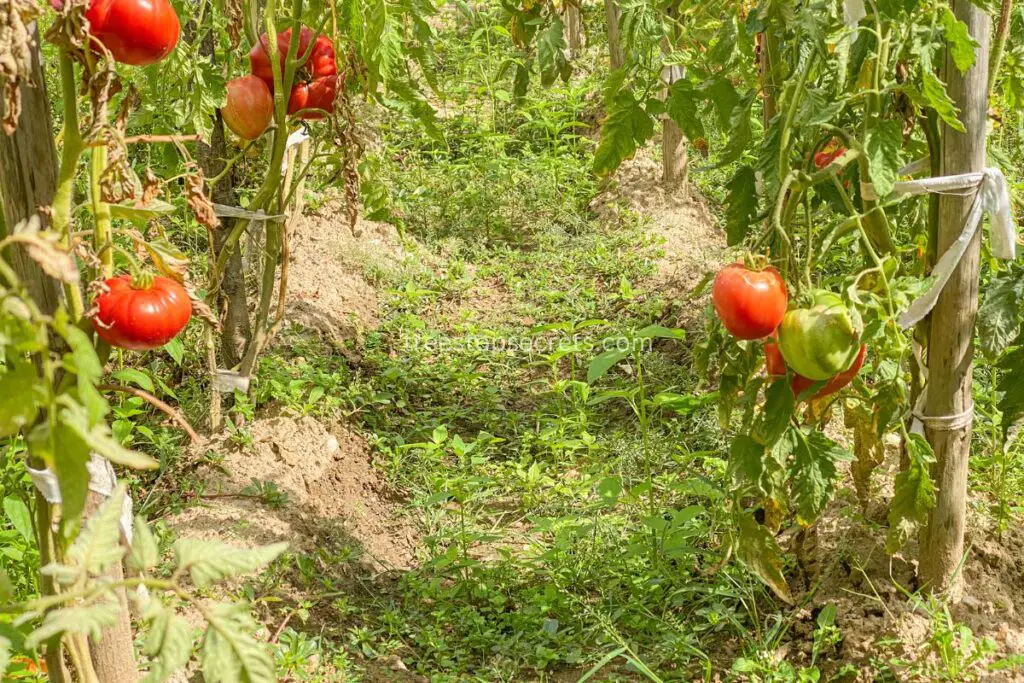
Implementing best practices is crucial. Regular monitoring and maintenance are vital for optimal results. By regularly checking the plants for any signs of diseases or pests, you can intervene early and prevent potential damage.
Sustainable gardening techniques, such as using organic fertilizers and natural pest control methods, contribute to healthier plants and higher yields. For instance, applying compost made from kitchen scraps helps enrich the soil with essential nutrients without relying on synthetic chemicals.
Overwatering and underwatering are common mistakes that can significantly impact tomato production. Overwatering may lead to root rot while underwatering can cause issues like blossom end rot. By ensuring proper watering practices, you can avoid these problems altogether.
Common Mistakes
Avoiding common pitfalls in cultivation is essential for achieving a bountiful harvest of beefsteak tomatoes. One common issue gardeners face is blossom end rot, which manifests as dark spots at the bottom of the fruit due to calcium deficiency or inconsistent watering.
Addressing this problem involves maintaining consistent moisture levels in the soil by providing adequate irrigation without causing waterlogged conditions. Adding calcium-rich amendments like gypsum into the soil before planting can help prevent blossom end rot.
Another mistake to avoid is over-fertilization, which can lead to excessive foliage growth at the expense of fruit development. It's important to follow recommended fertilization schedules and use balanced fertilizers specifically formulated for tomatoes.
Harvesting Beefsteak Tomatoes
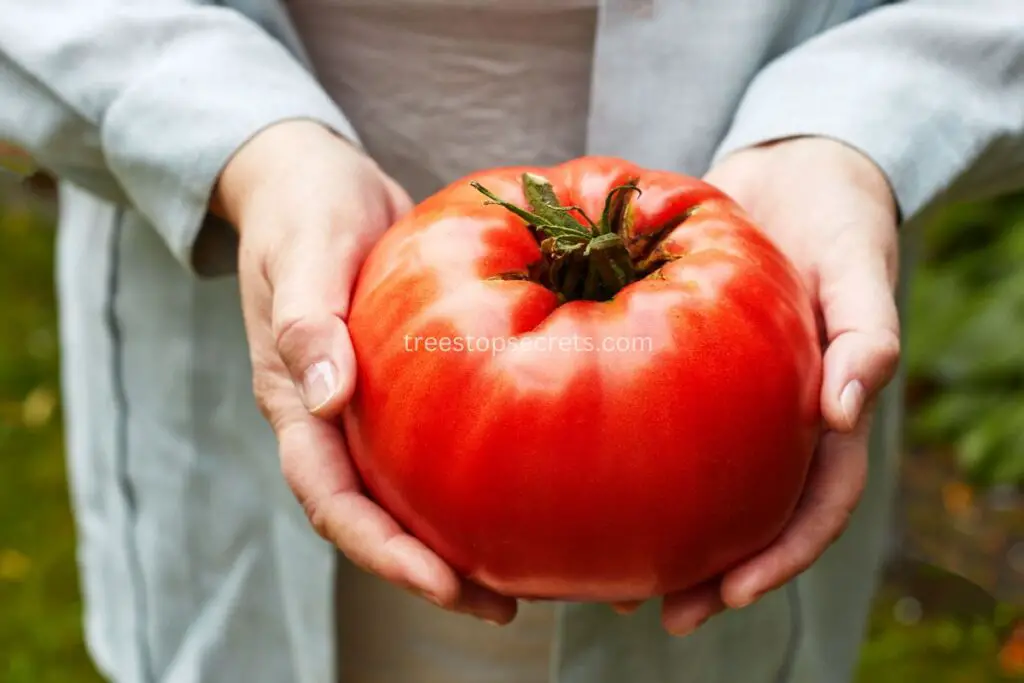
Beefsteak tomatoes are ready to harvest when they have a deep, rich color and are firm but slightly soft to the touch. Look for a vibrant red or reddish-orange hue with no hint of green on the bottom. Another visual cue is when the fruit has reached its full size, typically 6-8 ounces or more.
Gently squeeze the tomato. It should yield slightly under pressure without being too mushy. If it feels rock hard, it's not ripe yet; if it's overly soft, it might be overripe.
Picking Techniques
To prevent damage during harvesting, use gentle techniques such as twisting the stem until the tomato breaks free from the vine or using sharp pruners to snip them off cleanly. Avoid pulling or tugging at the fruit which can cause tearing and bruising.
When gathering beefsteak tomatoes from your plants, having proper tools like handheld pruners can make harvesting more efficient and reduce accidental damage to other parts of the plant. Wearing gloves can protect both your hands and the fruits from potential harm.
After picking your beefsteak tomatoes, handle them carefully to avoid any bruising that could lead to spoilage later on. Place them in a single layer in a shallow container where they won't be squished by their own weight or by other tomatoes piled on top of them.
Extending the Harvest Period
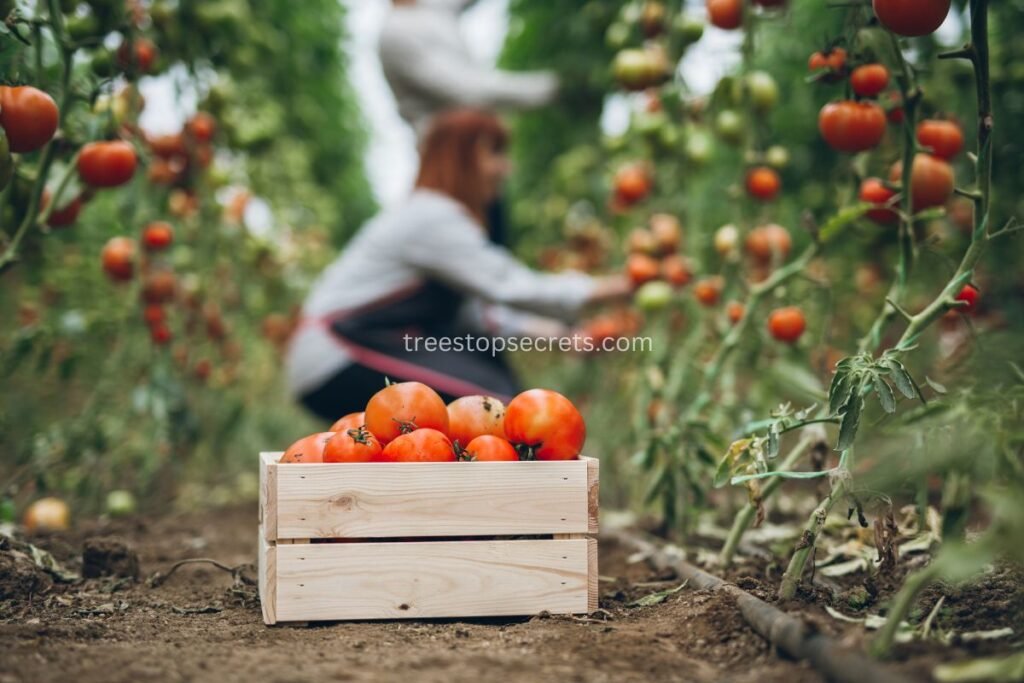
Successive Planting
Successive planting is a great way to ensure a continuous supply of harvestable beefsteak tomatoes. By staggering your plantings, you can enjoy a prolonged harvest period instead of having all your tomatoes ripen at once. This method offers several benefits, including avoiding overwhelming gluts and providing a steady supply for culinary needs.
Scheduling planting intervals is crucial for successive planting. Plan to sow new tomato plants every two weeks, ensuring that as one batch starts to mature, another is just beginning its growth cycle. This strategic approach ensures that you have ripe tomatoes ready for picking throughout the growing season.
Ensuring continuous harvests through successive planting also means you'll have an abundant supply of fresh tomatoes over an extended period. Imagine being able to pluck juicy beefsteak tomatoes from your garden week after week rather than harvesting them all in one go.
Season Extension Methods
Extending the growing season allows you to continue harvesting beefsteak tomatoes well beyond their typical peak period. Utilizing protective coverings such as row covers or cloches shields your plants from frost and cold temperatures, enabling them to thrive longer into the fall months.
Temperature regulation techniques are essential when extending the growing season for beefsteak tomatoes. Employ methods like hoop houses or cold frames that trap heat during cooler days and nights, creating a warmer microclimate around your plants. This helps maintain optimal conditions for harvesting even as temperatures drop outside.
Troubleshooting Low Yield Issues
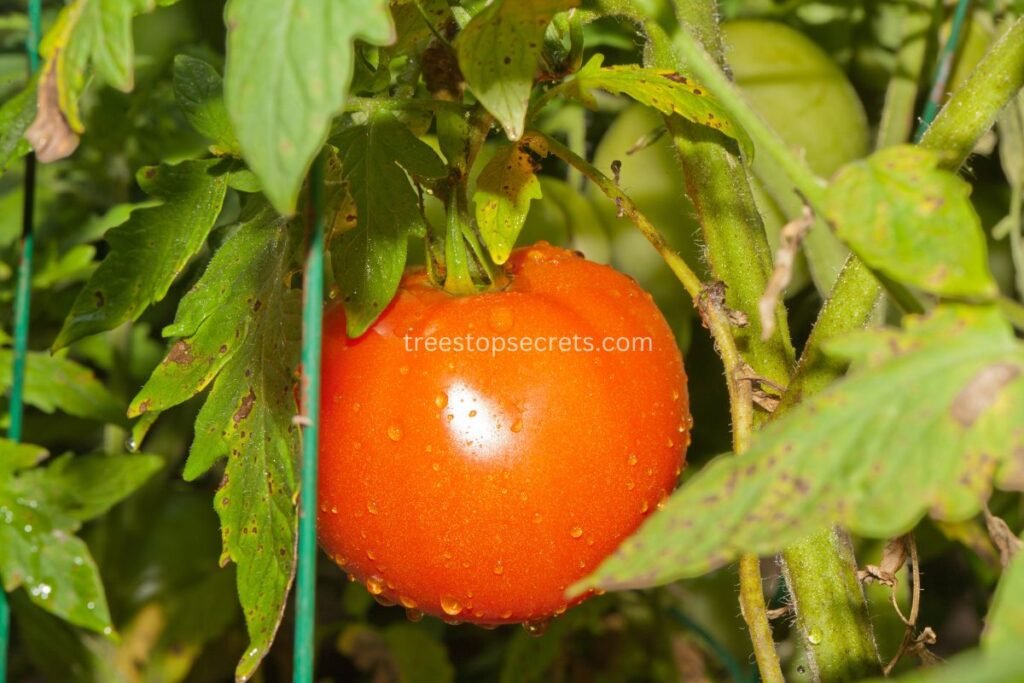
Nutrient Deficiencies
Nutrient deficiencies in beefsteak tomatoes can manifest as yellowing leaves, stunted growth, or poor fruit development. To address specific nutrient needs, consider using fertilizers tailored to the requirements of tomato plants. Look for fertilizers labeled for "tomato" or "vegetable" use, ensuring a balanced blend of nutrients.
Balanced nutrition is crucial for beefsteak tomatoes to thrive and produce abundant yields. A lack of essential nutrients such as nitrogen, phosphorus, and potassium can significantly impact plant health and fruit production. Utilize organic matter like compost or well-rotted manure to enrich the soil with vital nutrients.
Inadequate Pollination
Inadequate pollination can lead to malformed or underdeveloped fruits in beefsteak tomato plants. Insufficient pollination may result from a lack of natural pollinators like bees and other beneficial insects. Encouraging these natural pollinators by planting nectar-rich flowers nearby can help improve pollination rates.
If natural pollinators are scarce, consider hand-pollinating beefsteak tomato flowers using a small brush or cotton swab. Gently transfer pollen between flowers to ensure thorough pollination, thereby promoting healthy fruit development and maximizing yields.
Overcrowding Impact
Overcrowding can have detrimental effects on the overall health and productivity of beefsteak tomato plants. It may lead to increased competition for resources such as sunlight, water, and nutrients among neighboring plants. This overcrowding often results in reduced airflow around the foliage, potentially leading to disease issues.
To mitigate yield reduction due to overcrowding, adhere to spacing guidelines recommended for optimal growth of beefsteak tomatoes. Providing adequate space between plants allows for better air circulation while minimizing competition for essential resources like water and nutrients.
Conclusion
You've now learned the ins and outs of growing beefsteak tomatoes, from preparation and care to maximizing production and troubleshooting low yield issues. Remember, the key to a bountiful harvest is providing your plants with the right conditions and attention they need. Whether it's ensuring adequate sunlight, proper watering, or addressing nutrient deficiencies, every effort you put in will reflect in the quality and quantity of your tomatoes.
Now it's time to roll up your sleeves and put your newfound knowledge to work. Get out there, get your hands dirty, and watch those beefsteak tomatoes thrive under your care!
Frequently Asked Questions
How many beefsteak tomatoes can I expect per plant?
You can typically expect around 10-15 beefsteak tomatoes per plant. However, this can vary based on factors like growing conditions, care, and variety.
What are the key factors influencing beefsteak tomato yield?
Factors such as sunlight, watering consistency, soil quality, temperature fluctuations, and proper pruning significantly influence the yield of beefsteak tomatoes.
How can I maximize my beefsteak tomato production?
To maximize your beefsteak tomato production, ensure adequate sunlight exposure, consistent watering schedule, proper fertilization with balanced nutrients, and regular pruning for optimal air circulation.
When is the best time to harvest beefsteak tomatoes?
Beefsteak tomatoes are best harvested when they have fully developed their color and firmness. This is usually when they have reached their mature size and are no longer green at the stem end.
What should I do if I encounter low yield issues with my beefsteak tomato plants?
If you encounter low yield issues with your plants, check for nutrient deficiencies or pests. Adjust watering practices if necessary and consider providing additional support to the plants if they're struggling under their own weight.
Image Source: Paid image from CANVA

